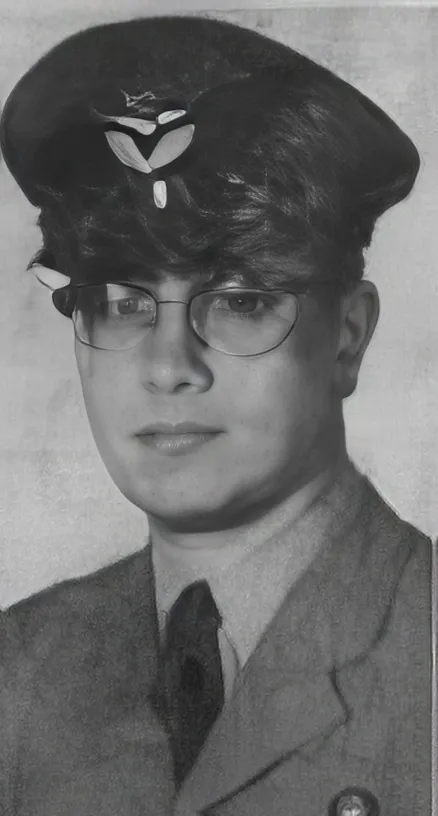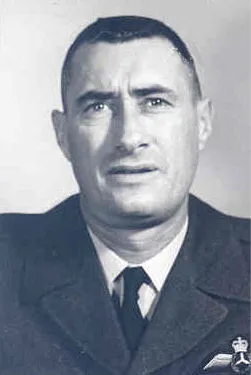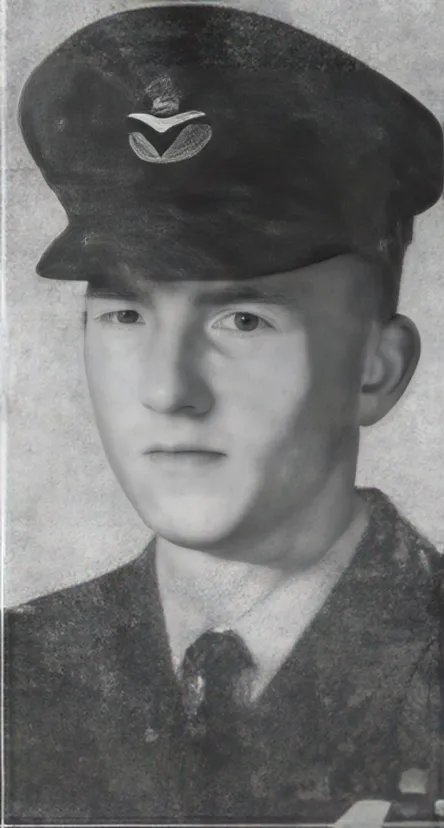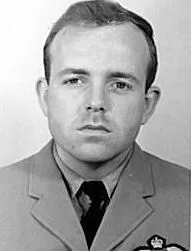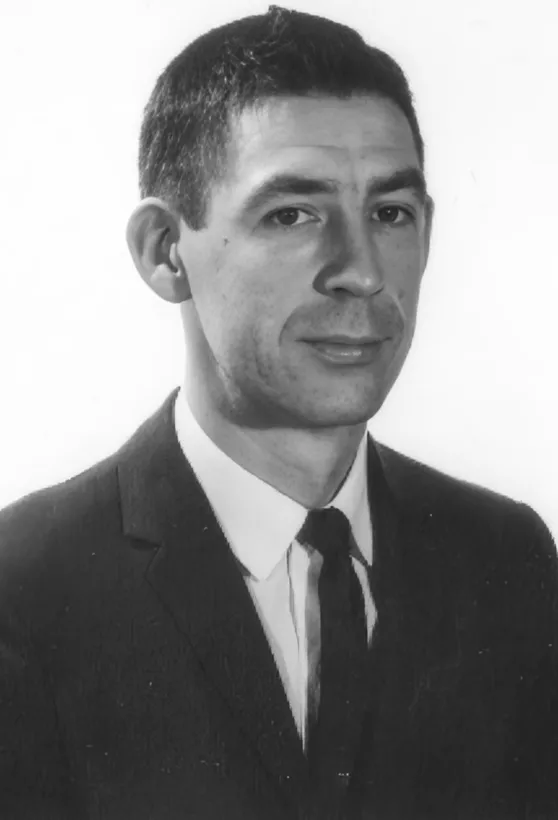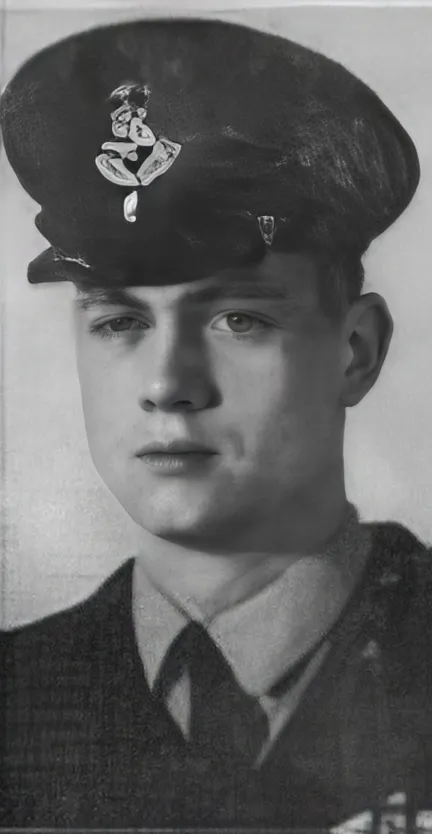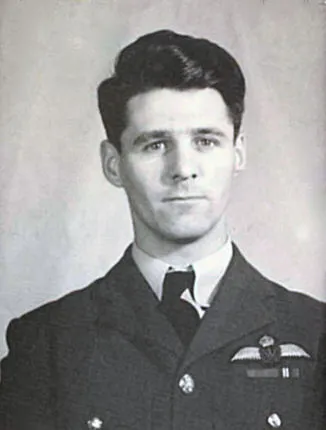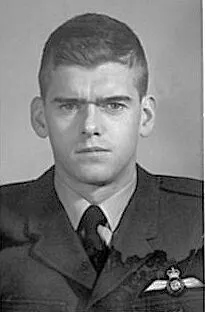Perron, James Ernest (Flight Lieutenant)
Missing 1965-March-23


Birth Date: unkown date
Born: Montreal, Quebec
Parents: Son of Ernest and Elizabeth Perron of Montreal, Quebec.
Spouse: Husband of Diane Perron of Burlington, Ontario. Father of Michael and Ann Perron. Brother of Lorne, Marie and Francis Perron.
Home: Montreal, Quebec
Enlistment:
Enlistment Date: unkown date
Decorations: CD

Service
RCAF
Unit
404 (MP) Sqn- Squadron
Ready to Fight
Base
Rank
Flight Lieutenant
Position
Service Numbers
203492
Home
Crew or Other Personnel
Argus 20727
Mission
Argus 2 20727
Reconnaissance 1965-March-23 to 1965-March-23
404 (MP) Sqn (RCAF) Roosevelt Roads NAS (Ceiba)
An Argus maritime aircraft from 404 squadron, RCAF Station, Greenwood, Nova Scotia, crashed and was lost at sea about 60 miles north of San Juan, Puerto Rico, shortly before midnight March 23 [1965]. There were no survivors among the 16 persons on board.
The crash report was given by the Halifax-based British submarine Alcide, which was operating with the Argus as part of the Canadian Atlantic fleet on Caribbean exercises Maple Spring and Maple Springboard.
The Argus, first to be lost since it replaced Lancasters in the RCAF anti-submarine role in 1958, was operating from the U.S. Naval Air Station, Roosevelt Roads near San Juan, in the combined Canadian -USA anti-submarine warfare exercise Maple Springboard. In addition to the 15 crew members Dr. CL Piggott, scientific advisor to the Air Officer Commanding, Maritime Air Command, was on board. Formerly with the Naval Research Establishment, Dartmouth, he was appointed to the advisory post In December.
The Argus was on task for four hours at the time of the crash, working with the Alcide. The submariners ,saw the glow of the crash reflected in the sky just before midnight. The Alcide surfaced and proceeded to investigate, The destroyer escorts Gatineau and. Terra Nova. were called to the scene and later were joined by the Annapolis . Aircraft from the aircraft carrier Bonnaventure joined the search and a total of six ships, two submarines, and the US Coast Guard became involved. 'The search for survivors was called off on the 24th.
At sunset oil March 25, in position 60 miles north of Puerto Rico, a memorial service was held on board the Bonnaventure, with the Gatineau in company, for the crew of the lost Argus aircraft. On completion of prayers, Commodore J. C. O'Brien, Senior Canadian Officer Afloat (Atlantic), dropped a wreath on the waters in the area of the crash. A one-minute silence was observed by the ship companies; marked by the firing of the Bonnaventure's gun.
Defence Minister Paul Hellyer, speaking to the House of Commons on March 24 confirmed that an RCAF Argus had crashed at sea the night before with total loss of life. At the same time he paid tribute to the "outstanding work of the officers and men of the Maritime Air Command these words:
"Highly skilled and dedicated to their work, they have maintained in all types of weather over the years constant anti-submarine Patrols at very low altitudes over the waters of our shores both in the Atlantic and Pacific.
"Due to the calibre of the men and the level of their training Maritime Air Command has achieved a record of flight safety that is second to none. Indicative of this is the fact that the Argus aircraft which came into service in 1958 had not been involved prior to last night in any major accident or loss of life while flying a total of more than 132,000 hours.
"While our sympathy goes out to relatives and friends," Mr. Hellyer concluded, ?the loss of such men is not only theirs but of Canada as a nation."
An investigation into the circumstances was immediately launched. The Argus was one of about 18 in six detachments which had operated from the US. Naval Air Station, Roosevelt Roads, on Puerto Rico. Ten RCN ships and two Canadian - controlled British submarines were also involved In the Caribbean exercises which began in mid-January and continued to the end of March.
The exercises were code-named Maple Spring for the Canadian aspects, which involved some 4,000 personnel, and Maple Springboard, a joint Canadian-US. anti-submarine exercise taking place in the same period.
Argus serial: 20727
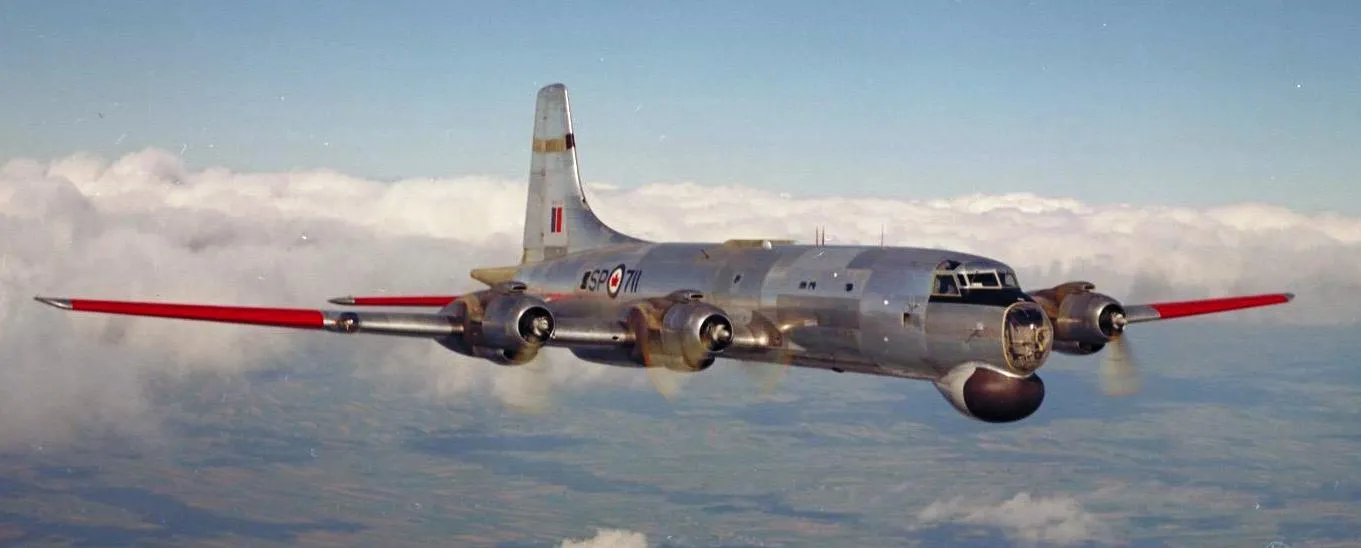
Canadair CP-107 Argus Mk. 1 (Serial No. 20711), No. 404 'Buffalo' (MP) Squadron.
The Canadair CP-107 Argus (company designation CL-28) was a maritime patrol aircraft designed and manufactured by Canadair for the Royal Canadian Air Force (RCAF). In its early years, the Argus was reputedly the finest anti-submarine patrol bomber in the world. The Argus served throughout the Cold War in the RCAF's Maritime Air Command and later the Canadian Force's Maritime Air Group and Air Command.
In 1949, Canadair recognized that the RCAF would soon be looking for a replacement for the Avro Lancasters being used in the maritime patrol role and proposed the CL-29, a variant of the North Star, itself a variant of the Douglas C-54 Skymaster or DC-4 transport. When the RCAF issued the specification in 1952, it was for a larger and more capable aircraft, and two proposals were received. These included a Lockheed Constellation variant from Lockheed, however its low speed handling was deemed inadequate by the RCAF, while Bristol proposed a variant of their Britannia airliner but concerns were raised over its floating controls, where they were controlled via servo tabs rather than direct linkages. The RCAF preferred the Bristol proposal, but it would be developed in Canada. Canadair presented two proposals, the CL-28 also based on the Britannia, which was accepted, and a lowest cost design called the CL-33 which was described as a fat Lancaster. It would have comparable to the Avro Shackleton already being operated by the RAF, but significantly lighter, and was to be powered by the same engines as were used in the CL-28, or similar radial engines.
Canadair began work on the CL-28 in April 1954 and at the time it was the largest aircraft to be built in Canada. The hybrid design, initially referred to as the 'Britannia Maritime Reconnaissance', or 'Britannia MR', was derived from the Bristol Britannia airliner, having the same wings, tail surfaces and landing gear except for being "Americanized" meaning that it used the same general design, but changed from British materials, dimensions and standard parts to American ones. Due to the greater stresses from flying at low altitude for long periods of time, even the components taken from the Britannia needed substantial reinforcement, and to meet these demands, extensive use of a locally developed metal to metal bonding was used. The Argus represented the first large scale use of titanium in the structure, as well as structural plastic, which was used to electrically insulate the top of the fin for the sensors mounted there.
The fuselage was completely redesigned by Canadair, going from the pressure cabin used in the Britannia to an unpressurised one with two 18 ft (5.5 m) long bomb bays fore and aft of the wings. The powerplants werre also changed from the Bristol Proteus turboprop engines to Wright R-3350 turbo-compound piston radial engines, which had lower fuel consumption necessary for extended missions at low level. At the design stage the Napier Nomad, another turbo compound engine was also considered, although the Nomad was later cancelled. Wikipedia
Unit Desciption
404 (MP) Sqn Ready to Fight ("Buffalo")
History of the Squadron during World War II (Aircraft: Blenheim IV, Beaufighter IIF, XC, XIC, Mosquito PR Mk VIC)

The squadron formed as the RCAF’s second, and first coastal, squadron formed overseas in WWII. It was a Coastal Fighter unit, formed at Thorney Island, Hampshire, UK ![]() in April 1941 as part of No 16 Group of RAF Fighter Command. Shortly after its formation, it moved to Scotland, where it spent most of the war, as part of No 18 Group Coastal Command. Initially the squadron was equipped with Bristol Blenheim Mk IV aircraft (unit code was EE). Its function was to attack enemy shipping along the Dutch and Norwegian coasts, and also later to provide long-range fighter cover for Coastal Command aircraft operating over the Bay of Biscay. The squadron flew from Castletown and Skitten, in Caithness, Scotland between July and October 1941, before moving to Dyce, Aberdeenshire, until December. In October “B†Flight of the squadron was based at Sumburgh in the Shetland Islands, and the remainder of the squadron joined them in December 1941. They were there until March 1942, when they moved to Dyce until August, when they returned to Sumburgh for 6 weeks. Then it was back to Dyce again until January of 1943. In September 1942 the squadron had re-equipped with Bristol Beaufighter IIF aircraft. In January 1943 the squadron moved to Chivenor in Devon as part of No 18 Group, and flew from there until they moved back to Scotland in April 1943, this time briefly based in Tain, Ross-shire before settling at Wick, where they remained until May 1944. From March to December 1943 they flew Beaufighters Mk XIC and then from September 1943 they flew the Mk XC. In early May 1944 the squadron moved to Davidstow Moor, Cornwall to assist with the D-Day landings. On the afternoon of D-Day itself, the squadron was involved in an action against 3 German destroyers which sought to intrude in the invasion fleet. They were equipped with rocket-firing Beaufighters and were part of a strike force that sank all three of the enemy ships. At the end of June 1944 they moved to Strubby, Lincolnshire, as part of No 16 Group, before returning to Scotland. This time they had a short stay at Banff, before moving to Dallachy, Moray, where they remained until April 1945 as part of the Dallachy Wing. They returned to Banff and were re-equipped with de Havilland Mosquito PR MK VIC aircraft, which flew as part of the Banff Wing
in April 1941 as part of No 16 Group of RAF Fighter Command. Shortly after its formation, it moved to Scotland, where it spent most of the war, as part of No 18 Group Coastal Command. Initially the squadron was equipped with Bristol Blenheim Mk IV aircraft (unit code was EE). Its function was to attack enemy shipping along the Dutch and Norwegian coasts, and also later to provide long-range fighter cover for Coastal Command aircraft operating over the Bay of Biscay. The squadron flew from Castletown and Skitten, in Caithness, Scotland between July and October 1941, before moving to Dyce, Aberdeenshire, until December. In October “B†Flight of the squadron was based at Sumburgh in the Shetland Islands, and the remainder of the squadron joined them in December 1941. They were there until March 1942, when they moved to Dyce until August, when they returned to Sumburgh for 6 weeks. Then it was back to Dyce again until January of 1943. In September 1942 the squadron had re-equipped with Bristol Beaufighter IIF aircraft. In January 1943 the squadron moved to Chivenor in Devon as part of No 18 Group, and flew from there until they moved back to Scotland in April 1943, this time briefly based in Tain, Ross-shire before settling at Wick, where they remained until May 1944. From March to December 1943 they flew Beaufighters Mk XIC and then from September 1943 they flew the Mk XC. In early May 1944 the squadron moved to Davidstow Moor, Cornwall to assist with the D-Day landings. On the afternoon of D-Day itself, the squadron was involved in an action against 3 German destroyers which sought to intrude in the invasion fleet. They were equipped with rocket-firing Beaufighters and were part of a strike force that sank all three of the enemy ships. At the end of June 1944 they moved to Strubby, Lincolnshire, as part of No 16 Group, before returning to Scotland. This time they had a short stay at Banff, before moving to Dallachy, Moray, where they remained until April 1945 as part of the Dallachy Wing. They returned to Banff and were re-equipped with de Havilland Mosquito PR MK VIC aircraft, which flew as part of the Banff Wing ![]() . The squadron was disbanded there in May 1945.
. The squadron was disbanded there in May 1945.
In the course of hostilities, the squadron flew some 3144 sorties, for the loss of 35 aircraft and 79 aircrew, of whom 77 were killed or missing. They were credited with destroying 8 aircraft, with 6 probables and 10 damaged. They dropped 32 tons of bombs on ships, 319 18-inch torpedoes and 1602 25-pound rockets, and were credited with 4 vessels sunk, 4 damaged, and had a share in 37 ships sunk and 14 damaged. They also shared in damaging 3 U-boats. The squadron members were awarded 2 DSOs, 45 DFCs, 3 Bars to DFC, 3 DFMs, 1 GM and 19 MiDs. Battle Honours were: Atlantic 1941–45, English Channel and North Sea, 1941–45, Baltic 1944–45, Normandy 1944, Biscay 1943–44. Wikipedia, Kostenuk and Griffin
Maps for Movements of 404 Squadron 1941-45
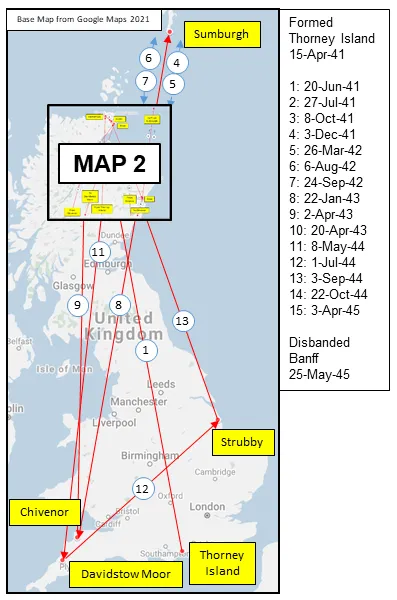
MAP 1: 404 Squadron Movements 1941-45 (right-click on image to display enlarged in new tab)
|
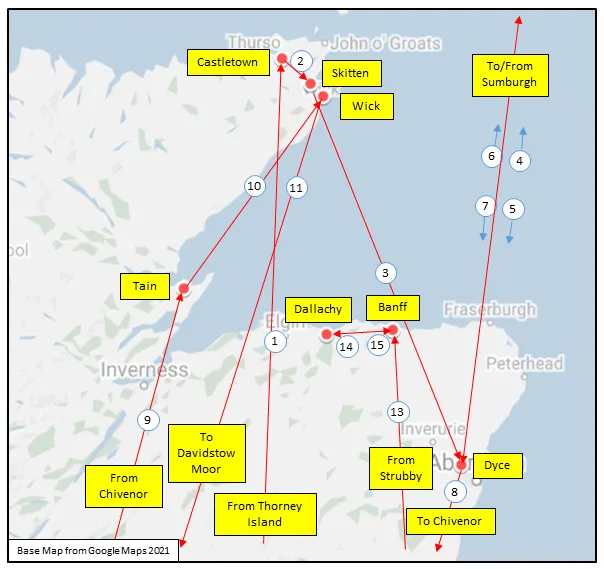
MAP 2: 404 Squadron Movements in Scotland 1941-45: Detail of Map 1
|
404 Sqn History Summary 1941-45
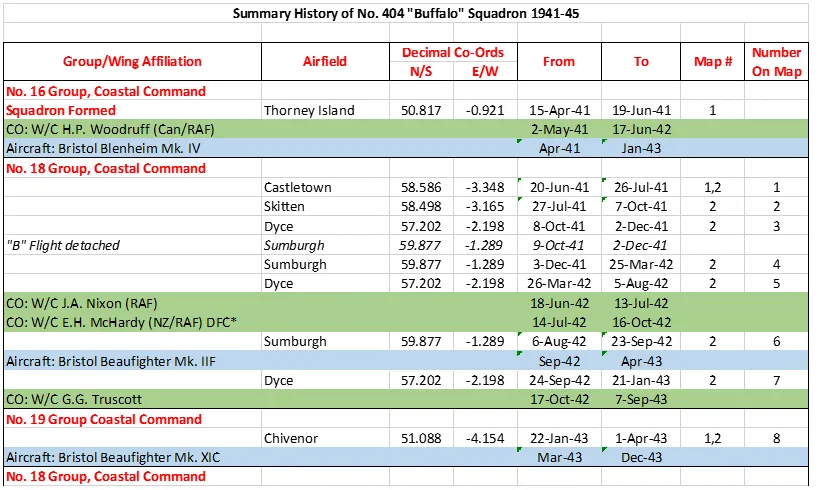
404 Sqn History Summary 1941-45 Page 2
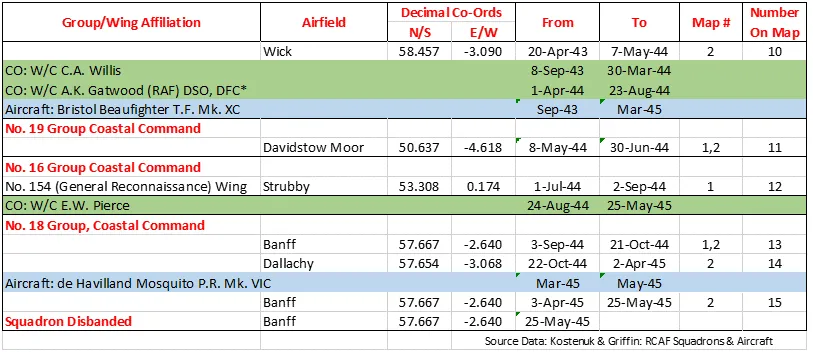
History of the Squadron Post-WWII (Aircraft: Lancaster X, Neptune, Argus I & II, Aurora)
The squadron was re-formed as No. 404 (Maritime Reconnaissance) Squadron at Greenwood, Nova Scotia ![]() on 30 April 1951, flying Avro Lancaster Mk. X aircraft. It was re-designated No 404 (Maritime Patrol) on 17 July 1956. The squadron was the second of four formed in Maritime Air Command, and flew on East Coast maritime duty. The aircraft used were Lancaster X until 1955, then Lockheed Neptune until 1960, then Canadair CP-107 Argus. On 1 February 1968 the squadron was integrated into the Canadian Armed Forces. Once the CP-140 Aurora aircraft became available, the squadron was designated 404 Maritime Patrol and Training Squadron. The current title is 404 Long Range Patrol and Training (LRP&T) Squadron, and it serves as the Operational Training Unit (OTU) for Aircrew and Maintenance personnel who work on the CP140 Aurora. It remains based at Greenwood, NS.
on 30 April 1951, flying Avro Lancaster Mk. X aircraft. It was re-designated No 404 (Maritime Patrol) on 17 July 1956. The squadron was the second of four formed in Maritime Air Command, and flew on East Coast maritime duty. The aircraft used were Lancaster X until 1955, then Lockheed Neptune until 1960, then Canadair CP-107 Argus. On 1 February 1968 the squadron was integrated into the Canadian Armed Forces. Once the CP-140 Aurora aircraft became available, the squadron was designated 404 Maritime Patrol and Training Squadron. The current title is 404 Long Range Patrol and Training (LRP&T) Squadron, and it serves as the Operational Training Unit (OTU) for Aircrew and Maintenance personnel who work on the CP140 Aurora. It remains based at Greenwood, NS.



